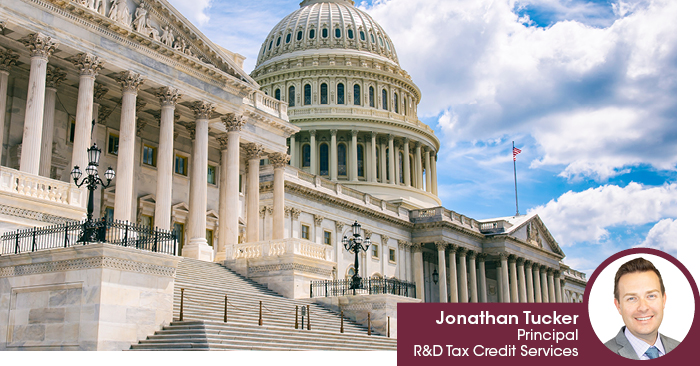Follow KBKG on Social Media
By Jonathan Tucker | Principal, Research & Development Tax Credits
Important developments recently came out of Congress related to the House’s ongoing reconciliation efforts, specifically around tax provisions that impact businesses directly, most notably, research and development (R&D) expensing.
At a recent Tax Council Policy Institute conference, Senators Mike Crapo (R-ID) and Steve Daines (R-MT) shared insights into the Senate’s perspective on the House tax package. Both made it clear: the Senate intends to rework the House bill to include more permanent tax provisions. This marks a significant shift, and a welcome one, especially regarding R&D.
R&D Expensing: Push for Permanency
One of the biggest takeaways is the Senate’s strong push to make full R&D expensing permanent. This is a major development. While the House bill includes a five-year window for immediate expensing of R&D costs, Senator Daines emphasized this type of temporary treatment creates uncertainty. He argued businesses can’t plan long-term around temporary tax rules, and permanency provides the certainty that drives real investment and innovation.
KBKG Insight:
Permanency allows taxpayers to plan for business growth and investment. The short-term solutions of the 2017 Tax Cuts and Jobs Act (TCJA) are the reason taxpayers are in the position they are in today. If the Senate can get many provisions permanent and find a way to pay for it, that would be a welcome development.
This shift is critical. If enacted, it would reverse the amortization rules introduced by the TCJA and permanently restore the ability to fully deduct R&D expenses upfront. That’s a game-changer for companies investing in innovation.
Timeline Concerns and the Debt Ceiling Pressure
While things are progressing, there are some timing headwinds to watch. The House Budget Committee is marking up the reconciliation bill, and Speaker Mike Johnson (R-LA) is still aiming for a floor vote with an aggressive timeline of before Memorial Day.
In the Senate, however, action likely won’t happen until June. Even then, the debt ceiling could be the ultimate forcing mechanism. Treasury Secretary Scott Bessent warned the government’s borrowing capacity could be exhausted by August, during Congress’s summer recess. This gives real urgency to passing a bill sooner rather than later.
The Senate and House are trying to achieve a goal to finalize something by July 4, 2025, aligning with the Treasury’s warning. The debt ceiling is being tied to this tax legislation (which can create an additional sticking point), but the pressure it creates could accelerate negotiations.
Conclusion
- Permanent R&D expensing is in play and could become law, a major win for business investment
- Expect activity to heat up in June, with the debt ceiling acting as the critical driver for final decisions
KBKG will continue to monitor these developments closely and keep taxpayers updated as they evolve. KBKG and its experts specialize in navigating complex tax legislation and translating policy shifts into practical, strategic solutions. Those with questions about current tax incentives and benefits are encouraged to contact a KBKG expert today.
About the Author
Jonathan Tucker | Principal – Research & Development Tax Credits
Jonathan Tucker is based in Atlanta, GA, and has over 20 years of experience providing federal business tax advisory services, primarily in R&D tax credits, to clients in various industries including technology, manufacturing, transportation, healthcare, retail and consumer products, hospitality, media and entertainment, financial, and other professional services industries. Read More



